The day we went to Nicosia, we became aware that the border was actually operational and that it was possible to go to the Turkish part. That’s why we decided to come back and that’s what we did a couple of days later. The main idea was to go to the Turkish side and have a coffee there. It turned into a very pleasantly spent time and already at the border crossing we saw a tourist info office and got a very good map of the Turkish part of Nicosia which helped us a lot figuring out the route and what we wanted to visit.
Still, before any coffee or any sightseeing, we came across a street vendor of breads that attracted us at once. I mean the breads, not the vendor. Him I don’t even remember. The bread, simit or Turkish bagel, met all of my expectations and was even better than them. Soft, and yet with crispy crust and with a lot of finely baked sesame seeds that perfectly complemented the taste of the freshly baked bread.
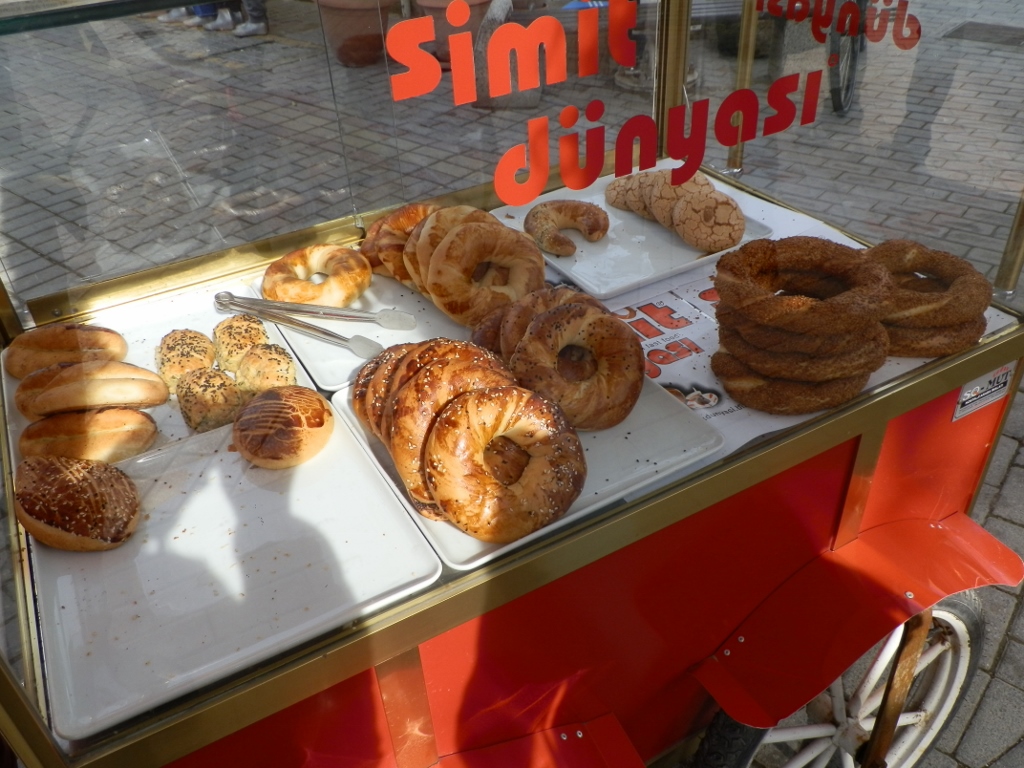 Turkish part of Nicosia, the pastry. We ate the simit that is farthest to the right
Turkish part of Nicosia, the pastry. We ate the simit that is farthest to the right
That first part of the Turkish Nicosia which is entered is a pedestrian zone full of different boutiques. A good share of those goods appears to be of dubious quality and certainly not of the proper origin. After all, there was a large board at the border crossing warning that any taking of counterfeited goods over the border would be prosecuted and then it is logical to assume that buying of fakes is a regular activity.
Needless to say, the first cafe we came across was where we made a break. We sat down, ordered some coffee and started to develop a sightseeing plan although there were interesting things to see right there as well. We were sitting at the Ataturk Square and there is a Venetian Column made of granite in its middle. It was originally brought there by Venetians in the 15th century and of course its top used to be adorned by a lion of St. Mark, the patron saint of Venice. Just like Cyprus itself, the column has also gone through all sorts of events and nowadays there is no more lion on its top, but rather a bronze sphere. Right there, by the square, there is also a very nice building of the Colonial Court built by the British when Cyprus was in their hands. Today, this is the Supreme Court of the Turkish Republic of North Cyprus.
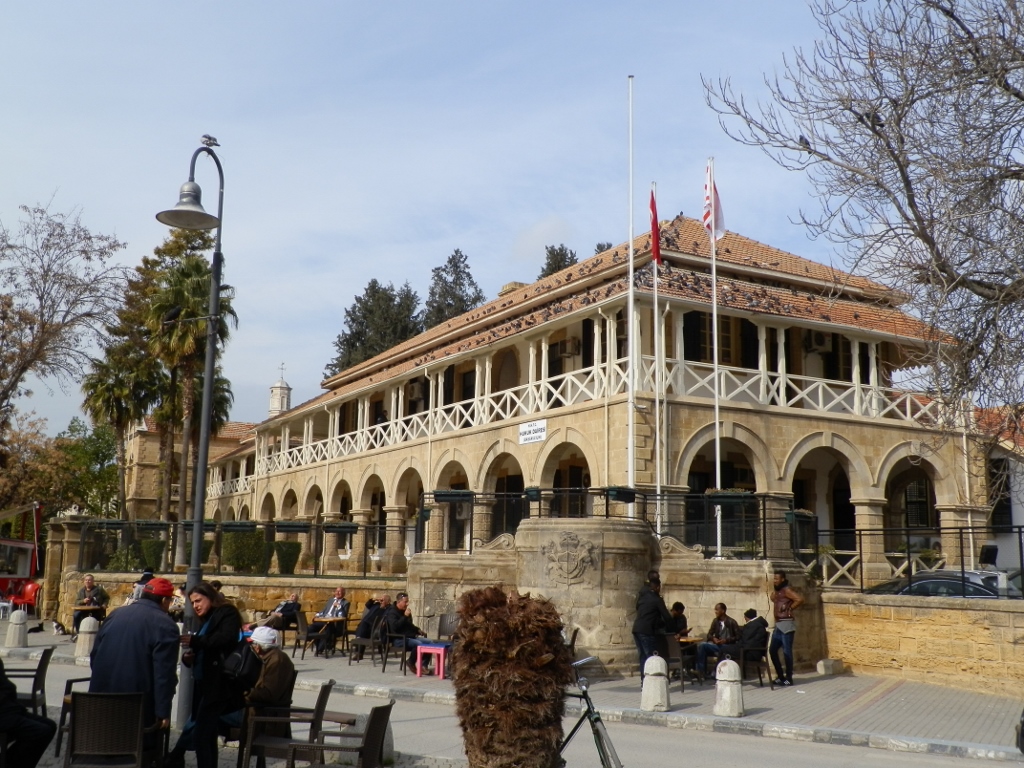 Turkish part of Nicosia, British Colonial Court
Turkish part of Nicosia, British Colonial Court
First we decided to leave the old town and enter the newer parts of the city only a little in order to see the Parliament building. We saw it and then we returned to old Nicosia. The old part of the city has been surrounded by walls ever since Venetians were here and if the Greek and the Turkish parts would be combined, it would provide a circular fort enclosed by high walls with some ten bastions. We went back to this part of the city passing by the Kyrenia gate which originates from the 16th century and was also built by Venetians. There are interesting buildings from different historical periods in the old part of the city, but of course there is a dominance of the Ottoman influence.
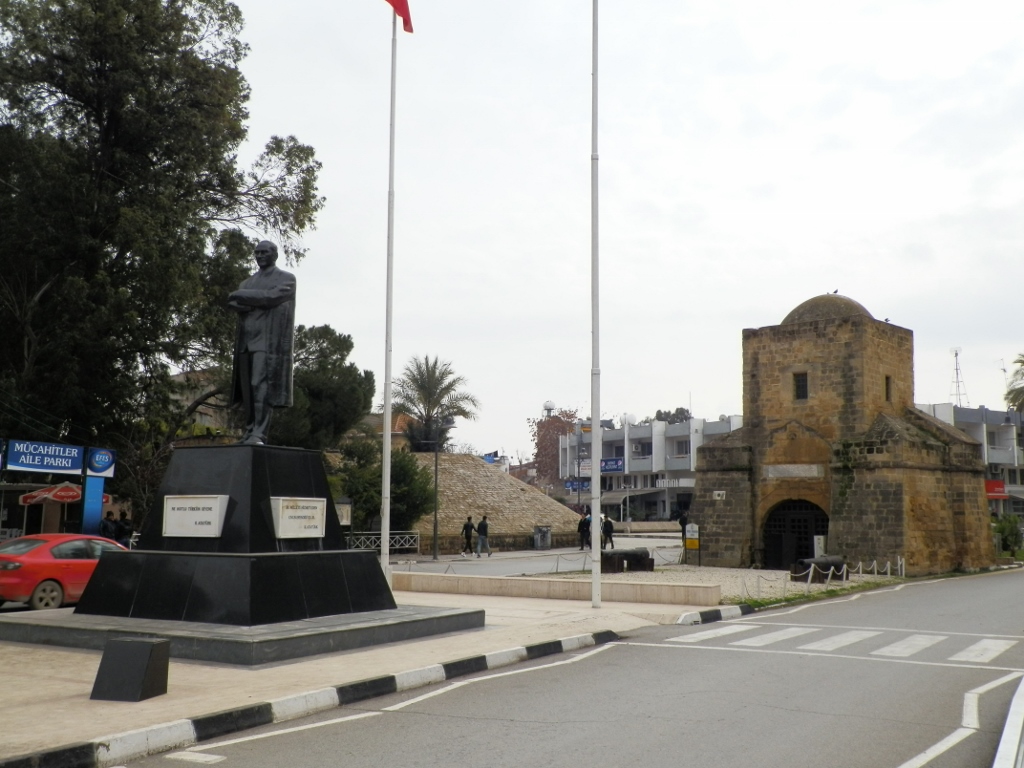 Turkish part of Nicosia, monument to Kemal Ataturk and the Kyrenia gate
Turkish part of Nicosia, monument to Kemal Ataturk and the Kyrenia gate
Soon after returning to the old town, we saw a burek (special Turkish pastry) shop and of course we immediately decided to try the original Turkish burek or börek. We found it interesting that in addition to liquid yoghurt that may be bought as a drink of choice to go with it, it was served with olives and pickled hot peppers, since in Serbia only liquid yoghurt is offered (in Serbia there is also a tradition of making burek, but it is usually made with lard). It was all fantastically tasty and we enjoyed it immensely!
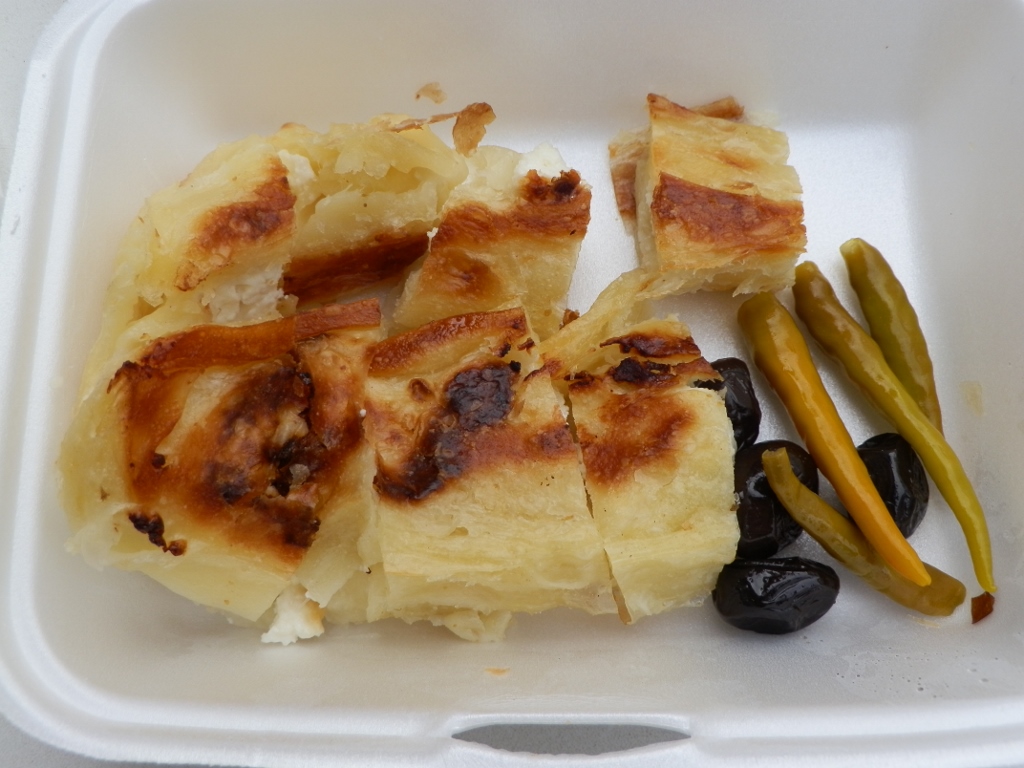 Turkish part of Nicosia, Turkish burek with cheese and accompaniments
Turkish part of Nicosia, Turkish burek with cheese and accompaniments
Very near the burek experience we came across a tourist shop and our main goal there was to buy postcards, for it seemed like good fun, since we had already sent a few postcards from the Greek part of Cyprus. In order to write them, we sat on a bench near a passage leading into the historic part of the city called the Samanbahce Quarter. The houses there, built at the beginning of the 20th century, were part of a social housing project and they all have a ground floor only, with narrow passages between the houses that were full of flowers. It looks cute, even romantic for tourists coming here to visit, but we both agreed that bad neighbourhood could make a hell out of such a place.
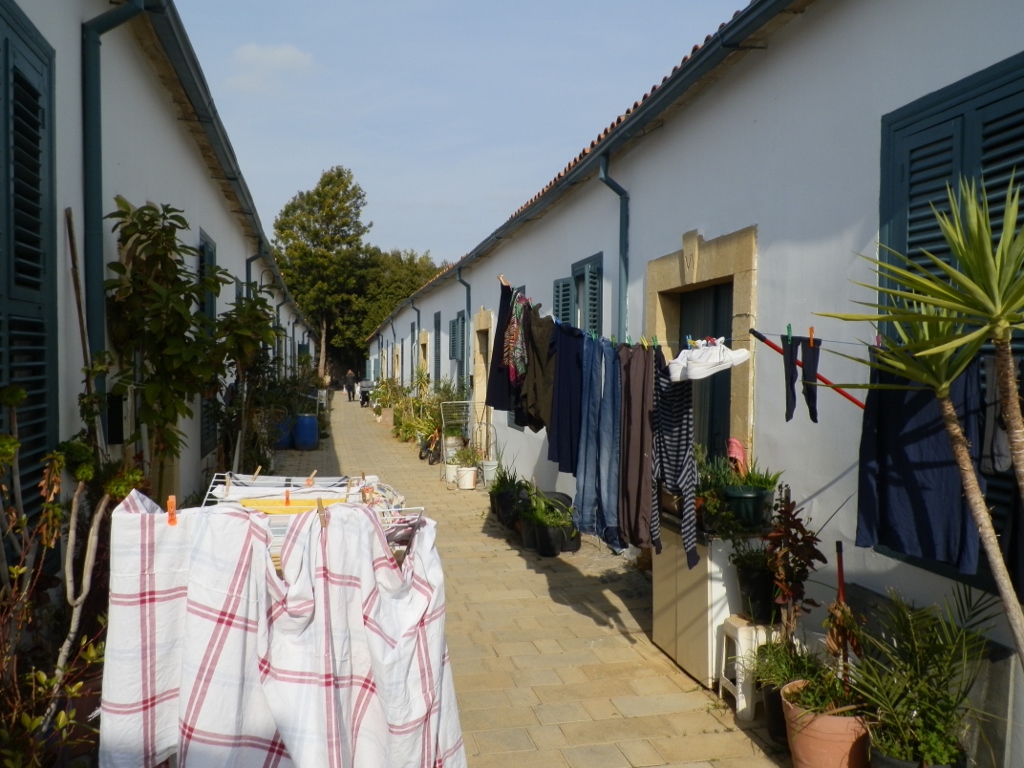 Turkish part of Nicosia, the Samanbahce Quarter
Turkish part of Nicosia, the Samanbahce Quarter
We also dropped at a nearby post office to buy stamps and send postcards, and then we started with some serious sightseeing. The first stop on our list was the Kumarcilar Khan and there we sat (what else?!) at a cafe and had a glass of freshly squeezed pomegranate juice. It was fantastic! Still, that did not distract me too much from the beautiful place that khan was. The central patio is filled with restaurant and cafe tables, while former rooms have been turned into shops with beautiful, artisanal goods and locally produced food and beverages, and it was all made with good measure and taste, and it all fitted with the setting perfectly.
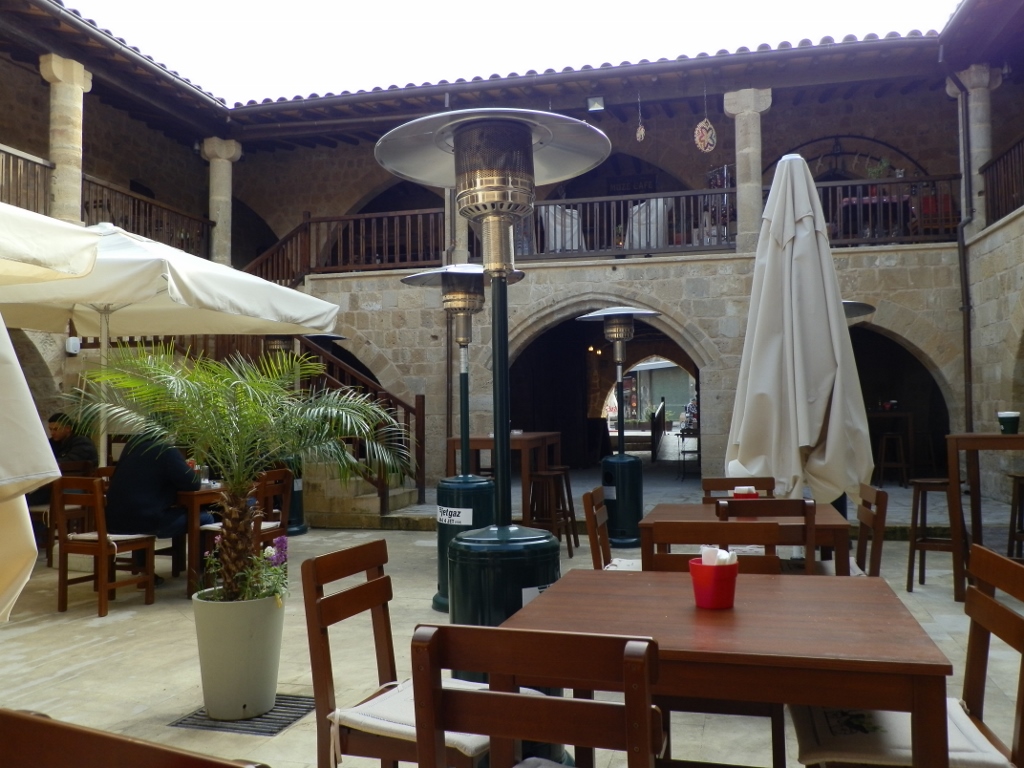 Turkish part of Nicosia, the Kumarcilar Khan
Turkish part of Nicosia, the Kumarcilar Khan
Although the very next place where we stopped was a shop in which we bought some baklava with pistachios (yum!) and although this may all seem as if we only ate and drank here, I must insist that we were in fact real tourists who then headed for the Selimiye Mosque. Our route took us through some beautiful parts of the old town.
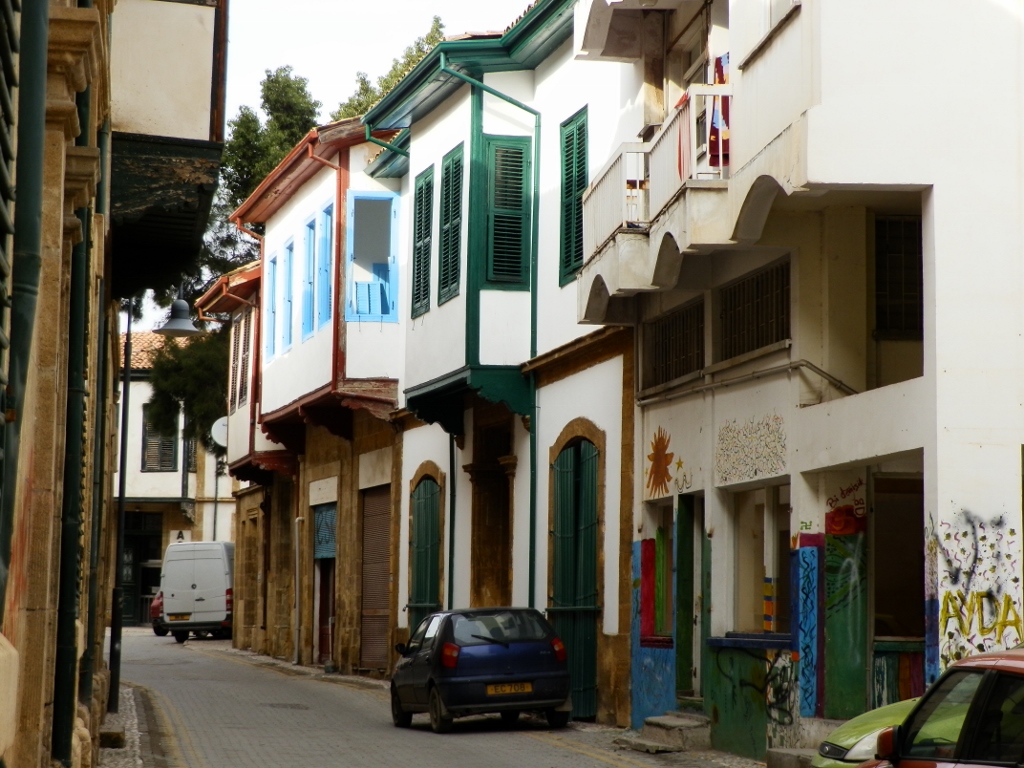 Turkish part of Nicosia, a part of the old town
Turkish part of Nicosia, a part of the old town
As for the Selimiye Mosque, it is an exceptionally interesting edifice. I’ve never seen anything similar before. It was originally the gothic-style Saint Sophia Cathedral built the 13th century and the first half of the 14th century, and it used to be the most important church in Cyprus. When the Ottomans conquered Cyprus, they painted the interior of the church, removed the Christian furnishing and equipment, laid down the carpeting, a mihrab, a mimbar and two minarets, thus getting a mosque. The original architecture has survived quite well and this appears as a very interesting combination of two religions. We took our shoes off, put scarves over our heads and entered the mosque in order to see it from within as well.
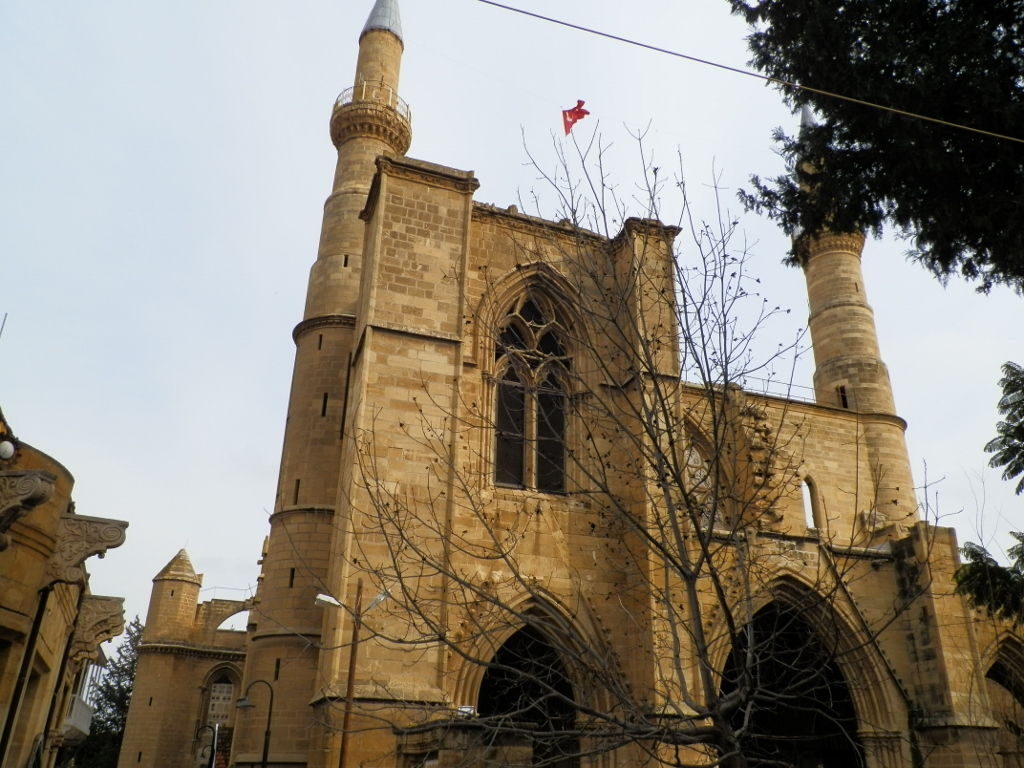 Turkish part of Nicosia, the Selimiye Mosque, the exterior
Turkish part of Nicosia, the Selimiye Mosque, the exterior
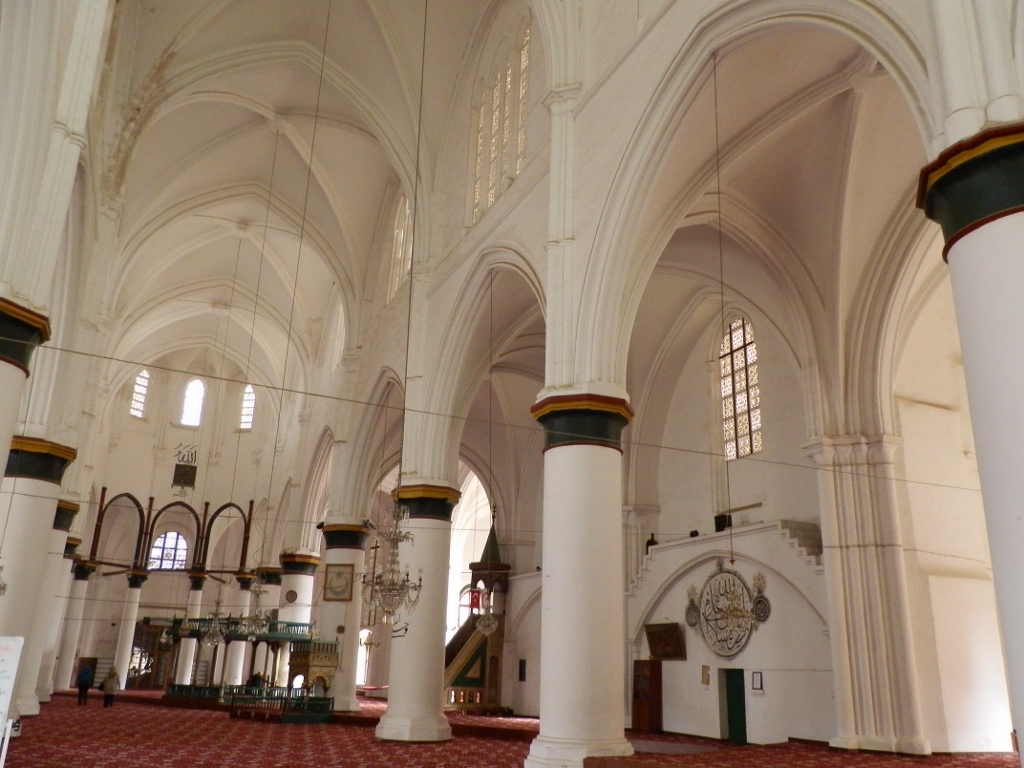 Turkish part of Nicosia, the Selimiye Mosque, the interior
Turkish part of Nicosia, the Selimiye Mosque, the interior
Next to this mosque there is the Bedestan, which suggests that it is some kind of a covered market. The place used to be St. Nicholas church and it was originally built in the 6th century, with additions during the period from the 12th to the 16th century. Afterwards, the Turks came and the space was used as a textile and food market, but today it is a cultural centre.
And then we passed by yet another khan, but this was the Great or the Büyük Khan. The khan was built in the second half of the 16th century and it is a fantastic place with gorgeous inner yard and here we finally did not eat or drink anything, but rather only had a walk around it.
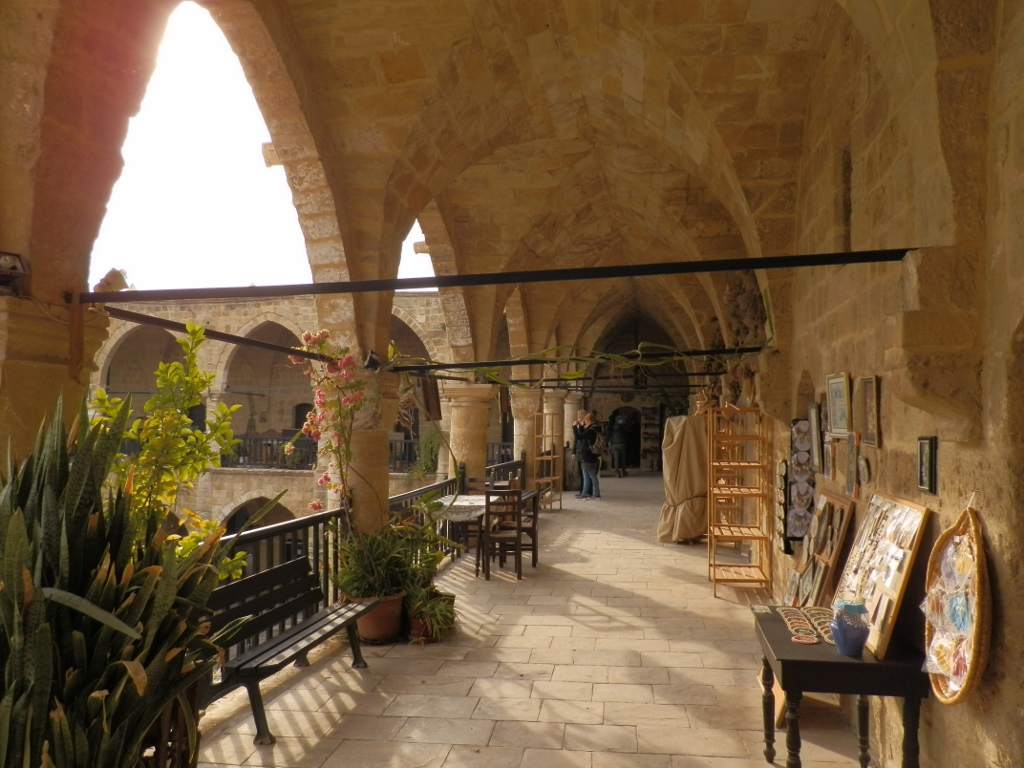 Turkish part of Nicosia, the Great Khan, the upper floor
Turkish part of Nicosia, the Great Khan, the upper floor
This also marked the end of our visit to the north part of Nicosia, so we went back to the border crossing and soon we caught a coach to return to Larnaca.
From the next day we got ourselves a car. This seemed a little problematic at first, since Cypriots drive on the left hand side, but eventually we did great. I left Belgrade in such a bad state that I thought I would not recover enough to even think about driving, so I didn’t bring my driving licence, but Sneza was ready and this actually determined our tasks: she drove and I was in charge of maps and navigation. I even got a pet title of “mapa-ji” which I carried with pride until the end of our stay.
The first day we decided to go to closer destinations and in our case it was Lefkara village to start with. Lefkara is situated in a hilly area and it is some 40 km away from Larnaca. To make it clear, there are two Lefkaras, but the “main” one is Pano Lefkara. Judging by their position in the hills, I’d call them Upper Lefkara and Lower Lefkara. For the famous Lefkara lace, one needs to go to the “upper” one. This is a very pretty village with cute, narrow streets and picturesque houses. Everything is mostly made of stone. In the centre of the village there are a lot of shops with souvenirs and, of course, with laces. The Lefkara lace is truly beautiful, but it was too expensive for my liking. On the other hand, I have a lot of lace at home. I got it free of charge from my granny who provided all of her grandchildren with hand-made lace to last them for the next several lives.
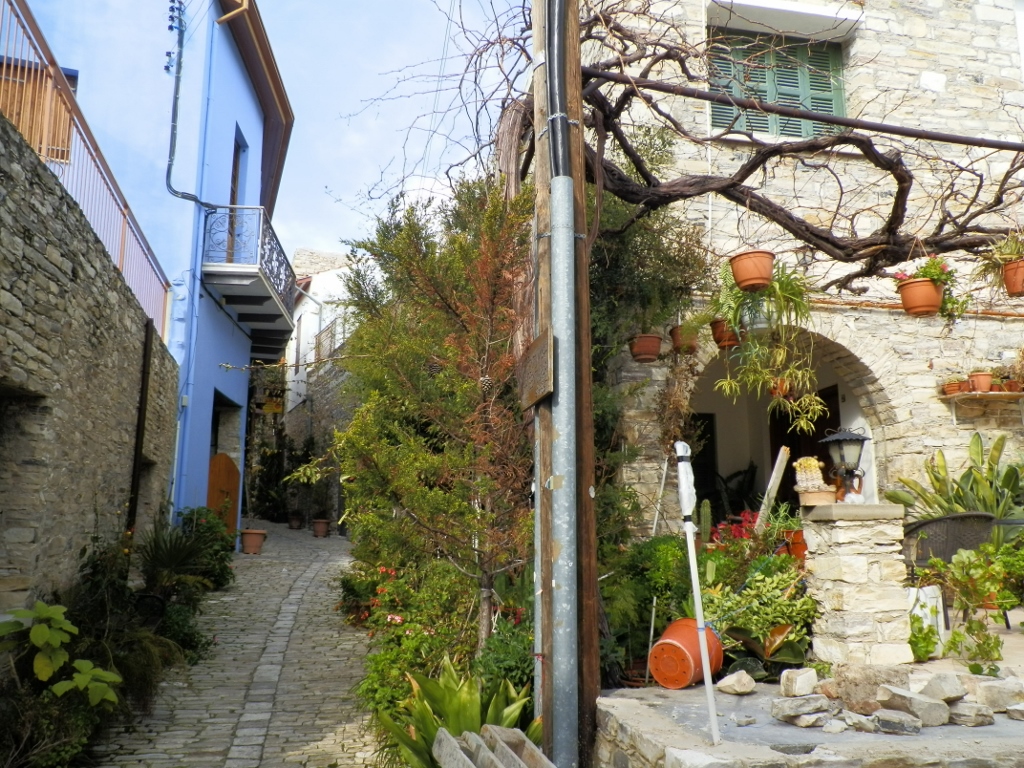 Lefkara
Lefkara
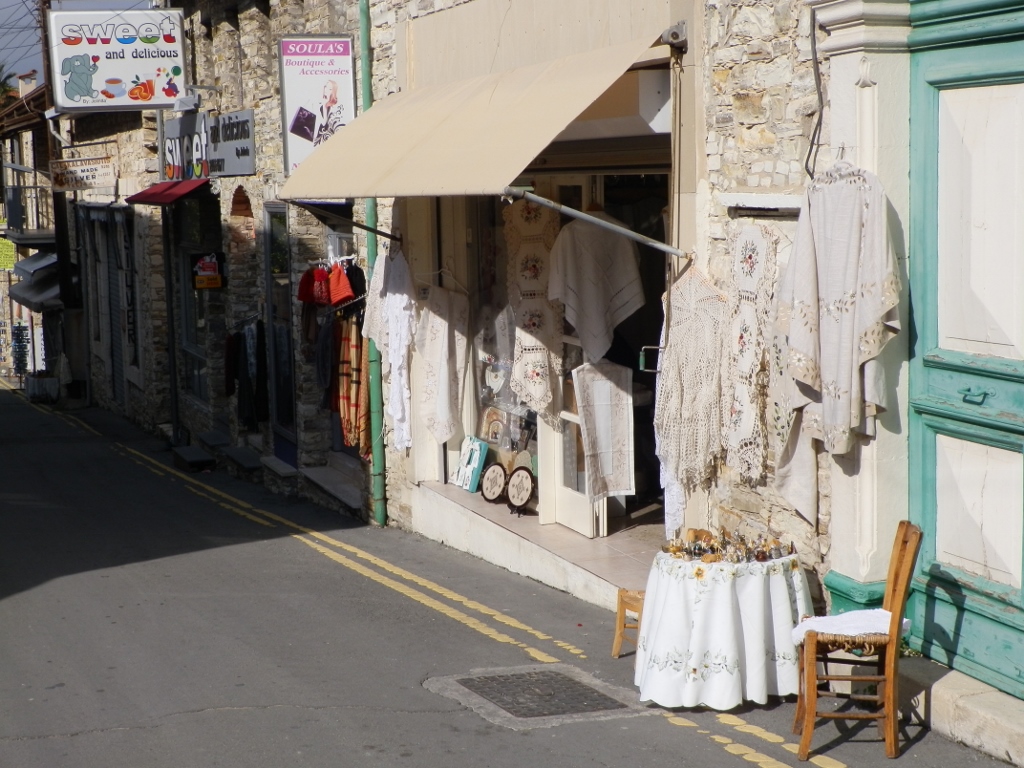 Lefkara, lace shops
Lefkara, lace shops
After this lovely stroll, we went down to the Larnaca – Limassol motorway, for right next to it there is an archaeological site Choirokoitia which is in the UNESCO’s World Heritage List. This is a Neolithic settlement, the remains of which are on a small hill. At the very foot of the hill there are five replicas of cylindrical structures that were built using the same construction methods and materials that were used in the Neolith and those five structures are the first thing one comes across upon entering the site. After this, the path goes uphill, but there you will need much more imagination, for there are only basic remains of stone houses that used to be round in their floor plan.
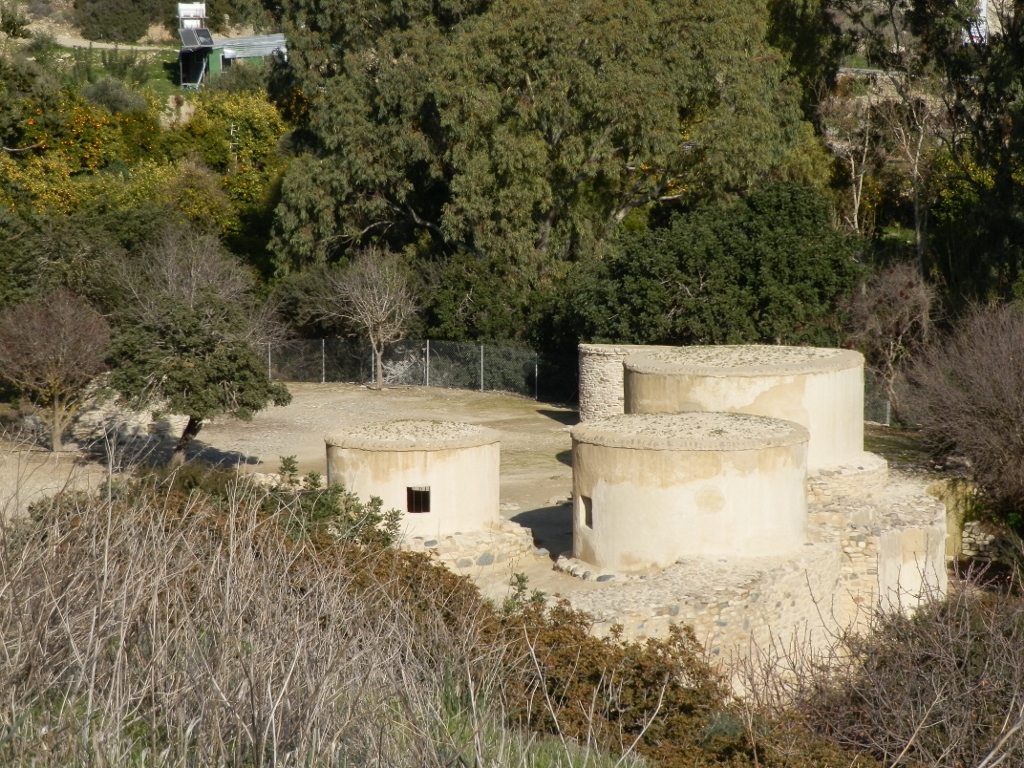 Choirokoitia, reconstructed dwellings
Choirokoitia, reconstructed dwellings
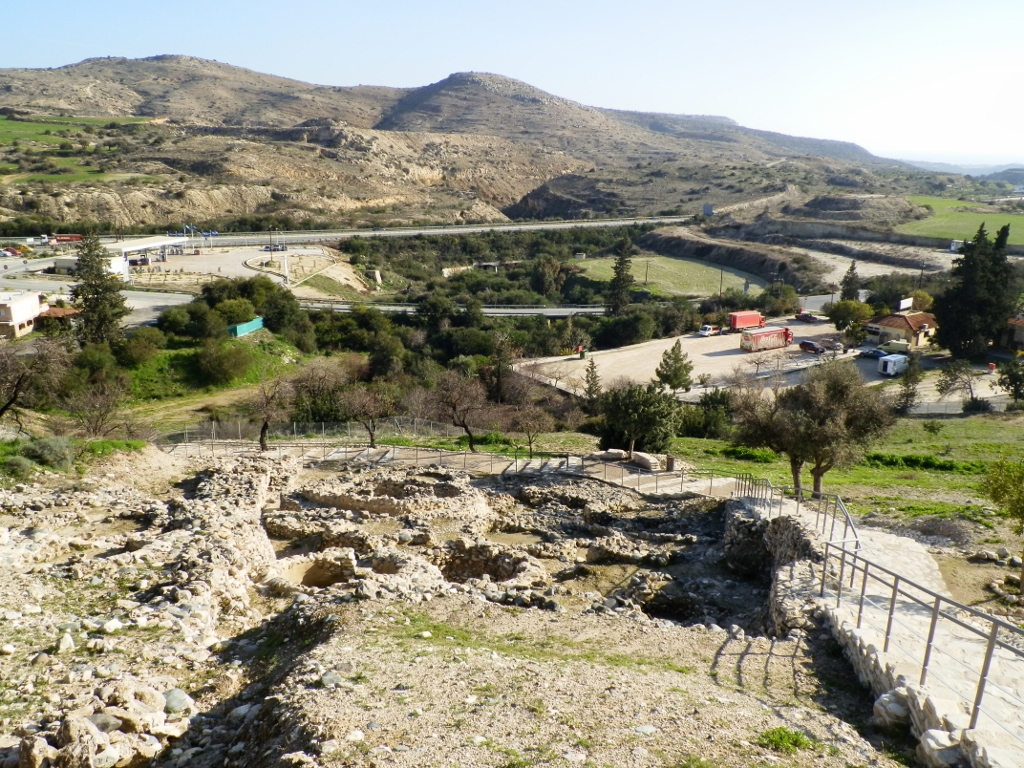 Choirokoitia, remains of stone houses from the Neolith, with the Larnaca – Limassol motorway in the distance
Choirokoitia, remains of stone houses from the Neolith, with the Larnaca – Limassol motorway in the distance
The next destination was the Stavrovouni Monastery. It is the oldest monastery in Cyprus, having been founded in the 4th century, and it is situated literally on the top of a mountain at 750 m above sea level. The legend says it was founded by a woman, Saint Helena, the mother of Emperor Constantine the Great, but nowadays it is off limits to women. For us, there is a “consolation prize” – the Church of All Saints of Cyprus which stands beside the parking lot in front of the entrance gate that leads into the monastery. Still, this doesn’t mean that our uphill drive was in vain, and by the way it is possible to come here also on foot or by bike. Quite the contrary. The views were breathtaking, both during the drive and from the parking lot.
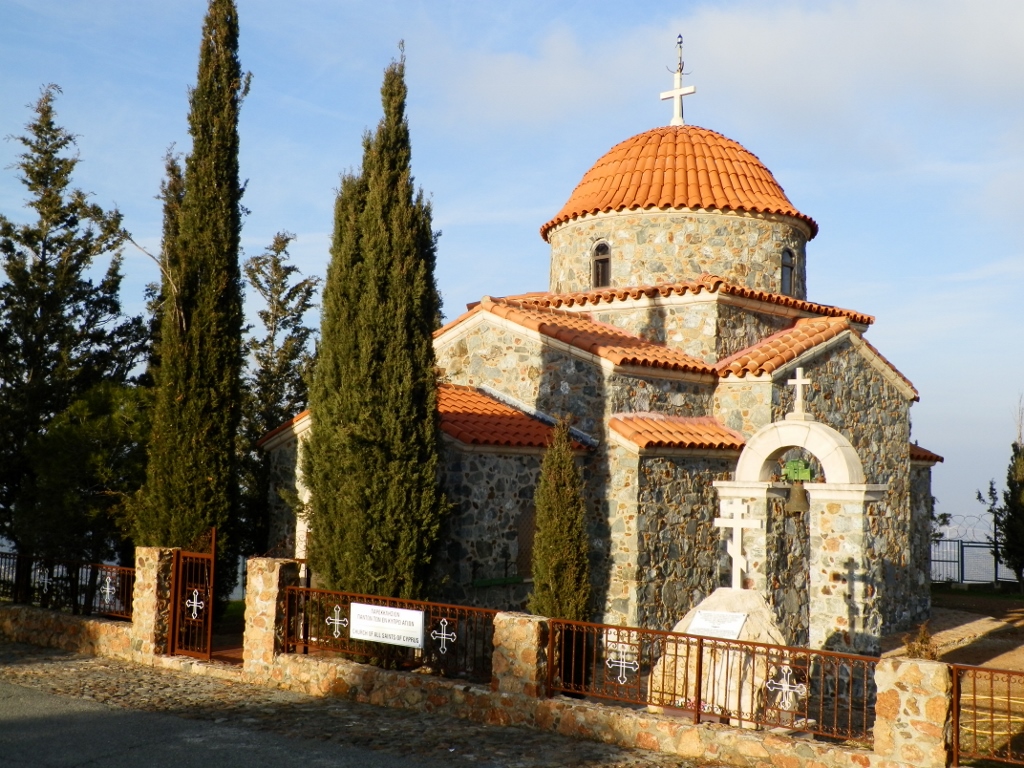 Church of All Saints of Cyprus
Church of All Saints of Cyprus
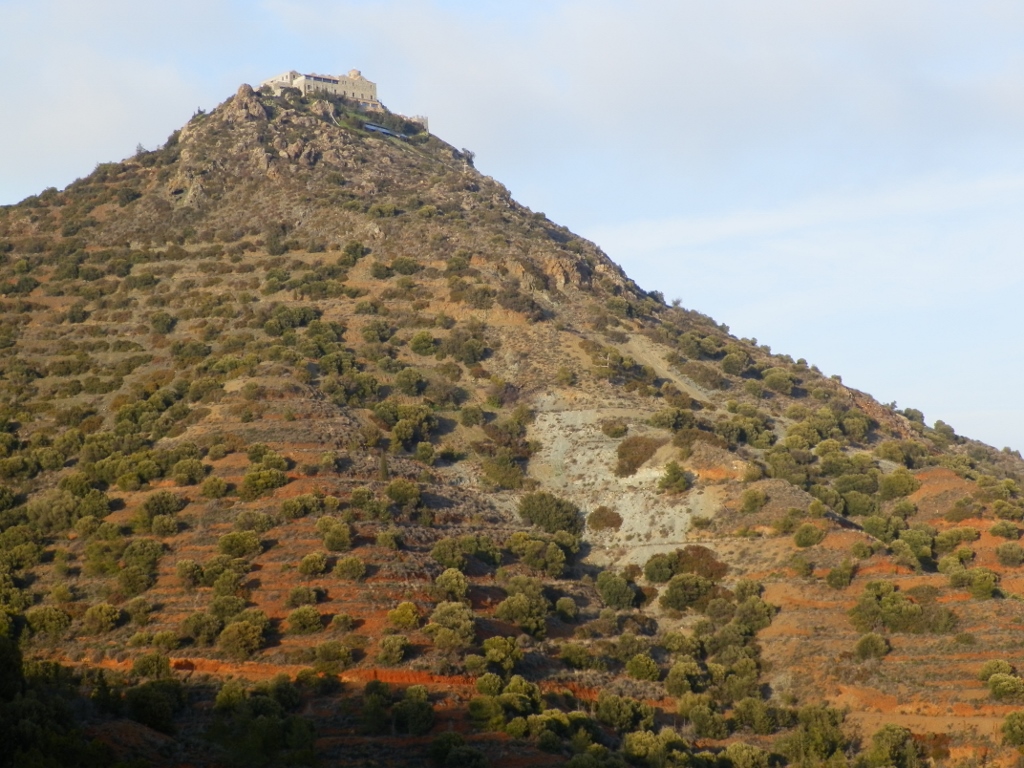 Stavrovouni Monastery
Stavrovouni Monastery
This day, the churches and we did not quite match. After the monastery we went to Pirgos village in which there is the Chapelle Royale from the 15th century, but there we were some 20 minutes too late and the church had already been closed. Still, even if only from the outside it was beautiful nonetheless. Small, made of stone and lit by the wonderful setting sun rays. This close encounter with a closed door did not discourage us though, and we tried to visit another church, this time in the village of Kiti, 7 km west of Larnaca, but again unsuccessfully for it was also closed. Again, it looked beautiful from the outside, but without any sun effects, for the sun had already set by the time we got there.
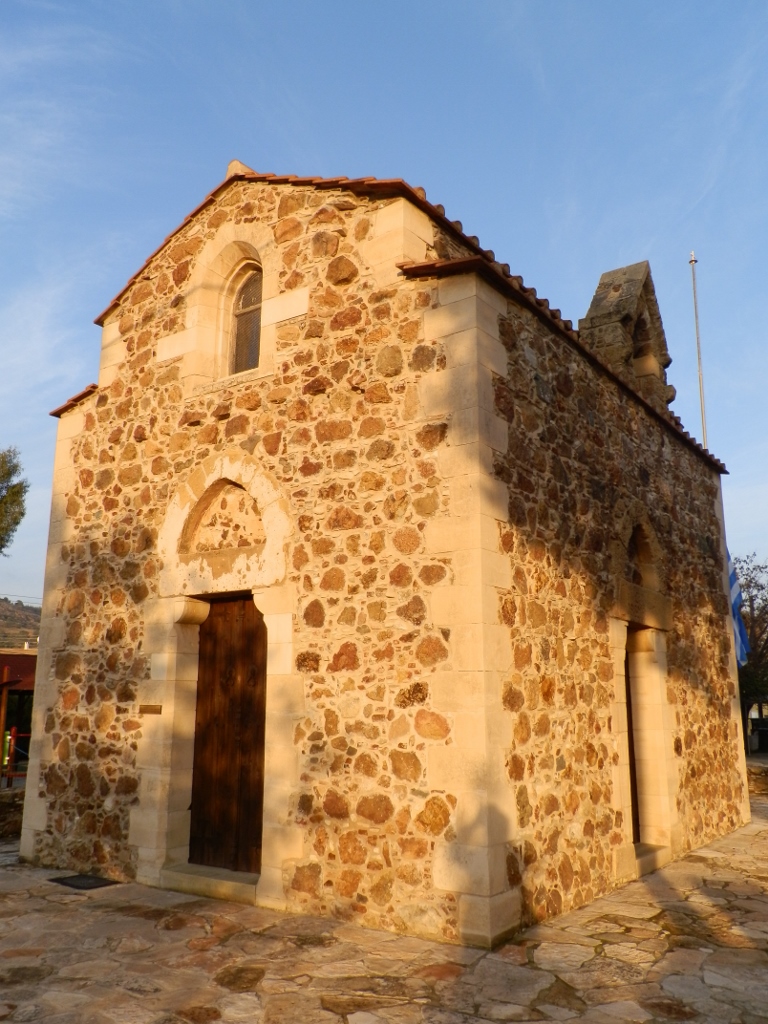 Chapelle Royale in Pirgos village
Chapelle Royale in Pirgos village
However, we did find a way to console ourselves and that was by going to a tavern that we had taken a note of a couple of days earlier when it was full of local residents. The owner was exceptionally kind. He was quite delighted that we were from Serbia and immediately added that both Cypriots and Serbs are Orthodox Christians. And then it turned out he knew about Belgrade football clubs. I told him that many years ago, as a child, I used to be a Red Star fan, but now I didn’t care one way or another. He said he preferred Partizan. I immediately knew why, thanks to my nephew who told me about these things before. Namely, this Cypriot was a fan of PAOK FC which has the same club colours as Partizan – black and white, and that creates some special bond between the fans of these two clubs. The same goes in the case of Red Star Belgrade and Olympiacos F.C. whose club colours are red and white. But, enough about football. It was time to eat. After a wonderful starter that included local halloumi cheese, I had lamb. And this is not something one talks about. It is there to be enjoyed!
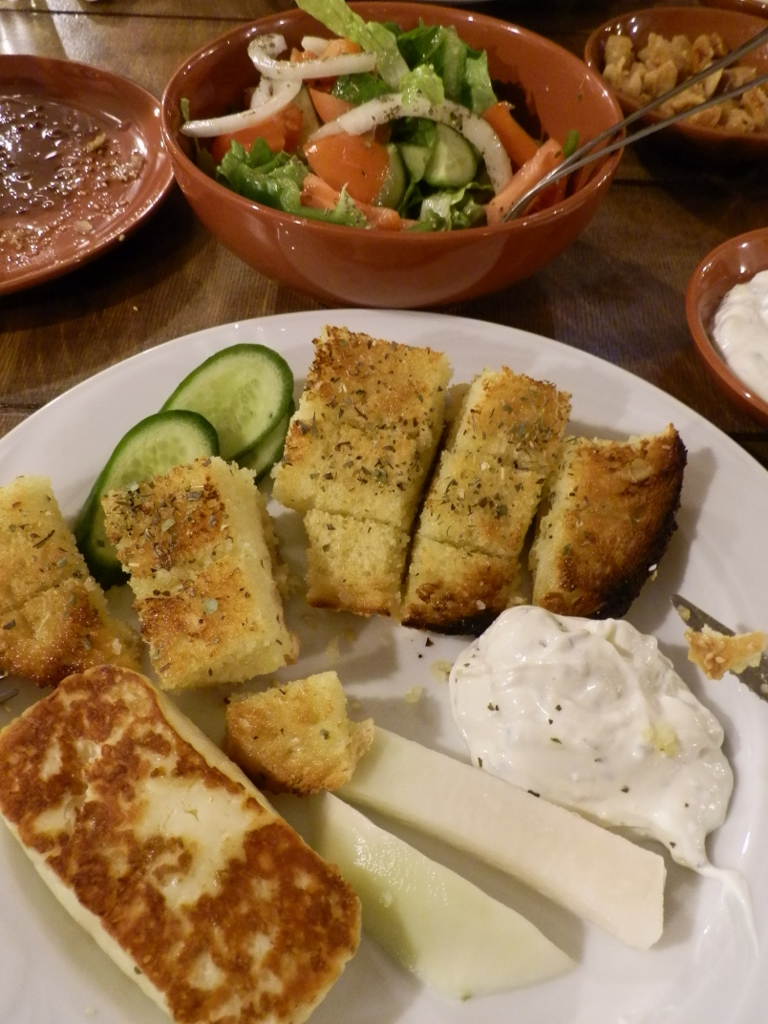 Starter before the lamb
Starter before the lamb